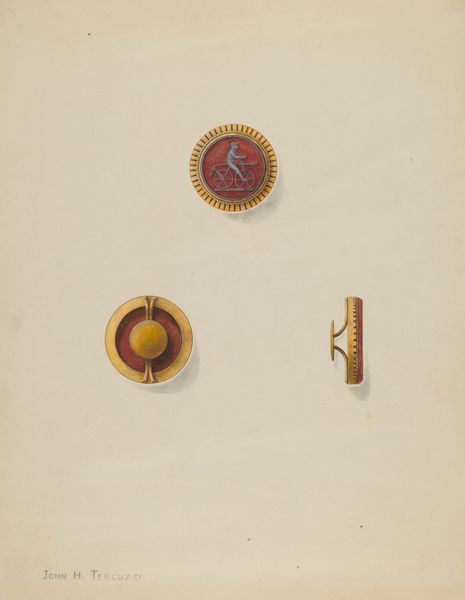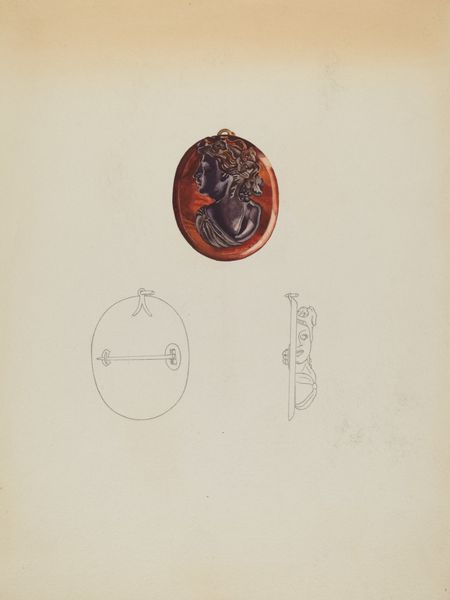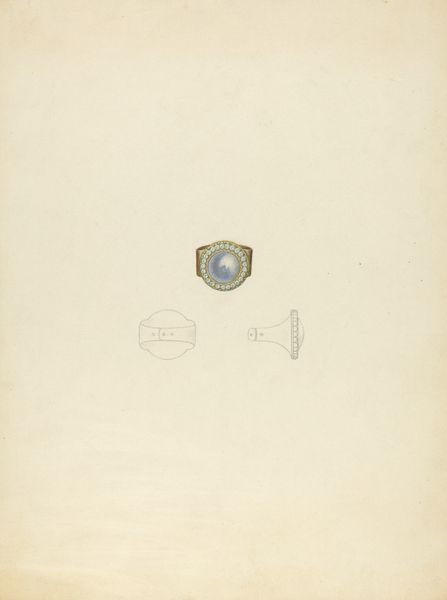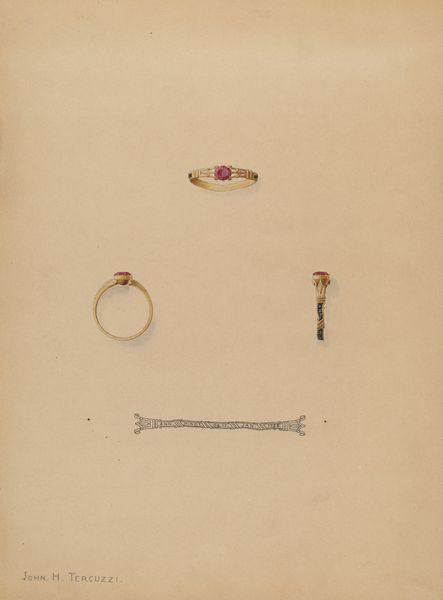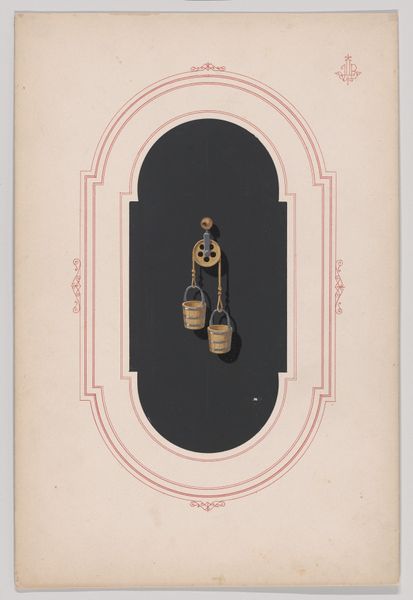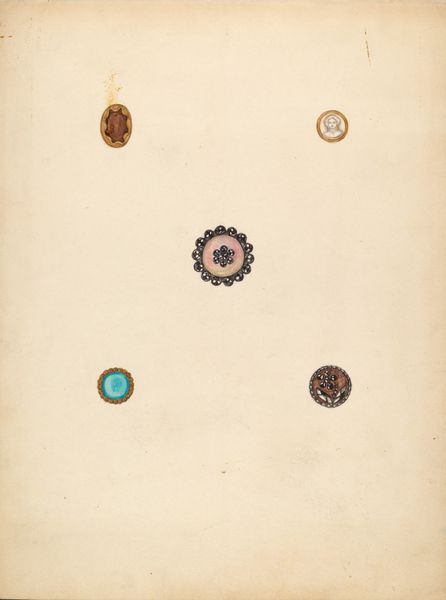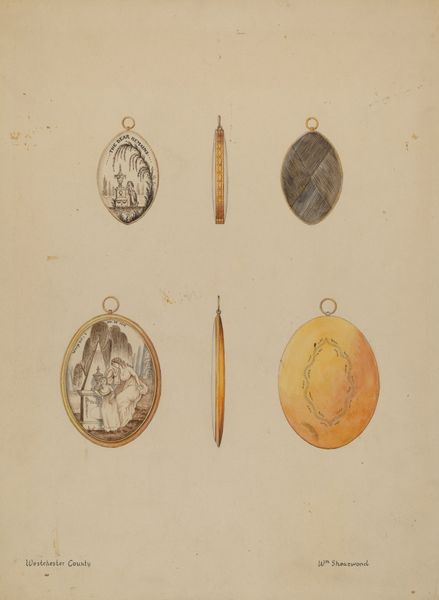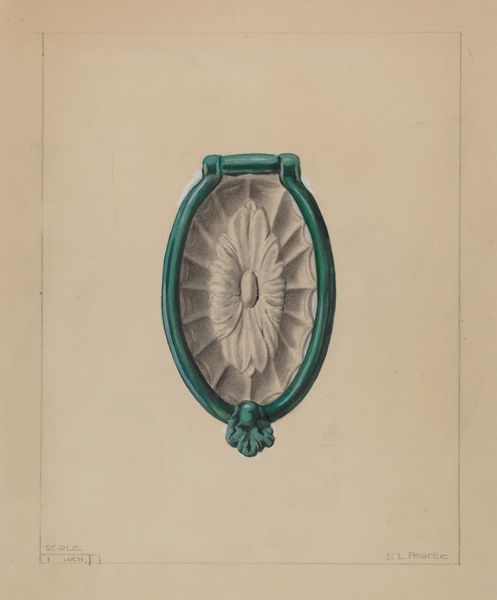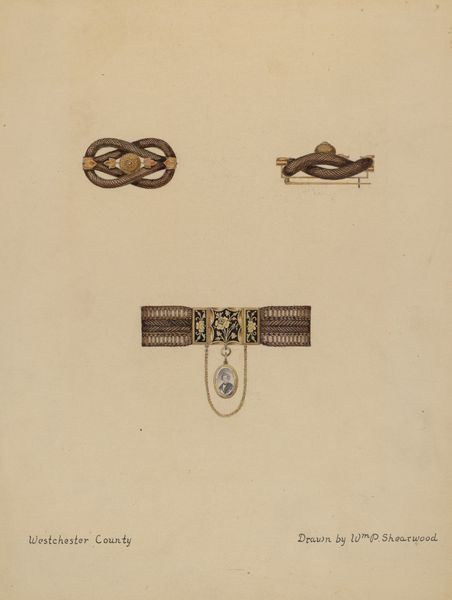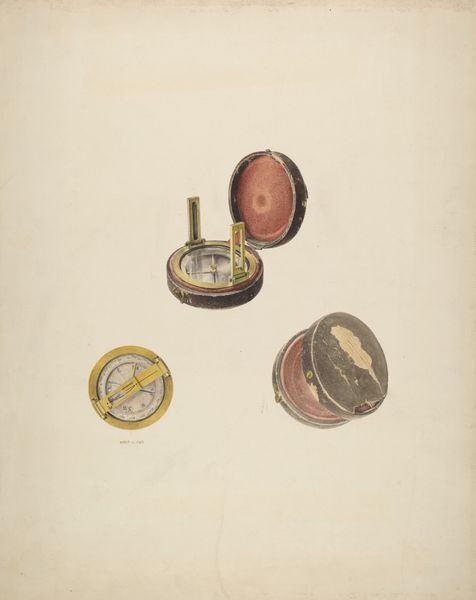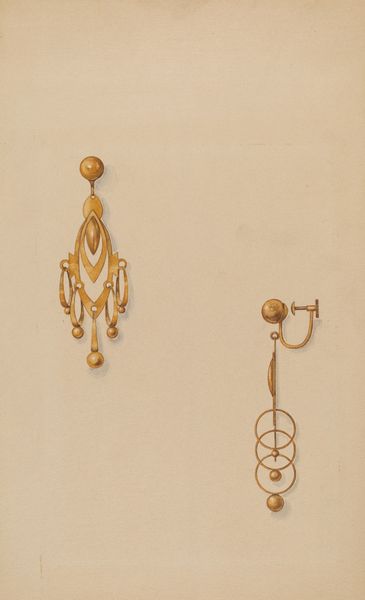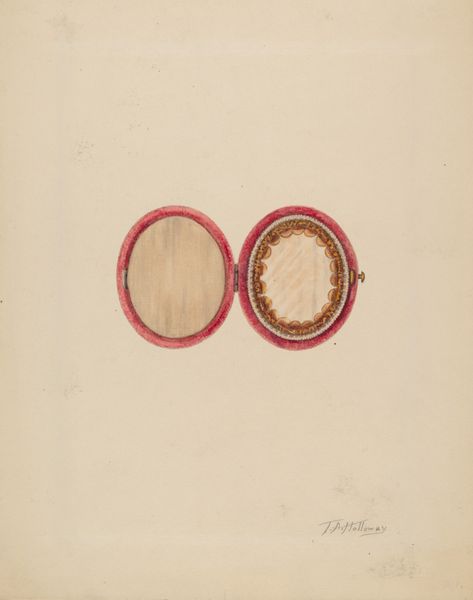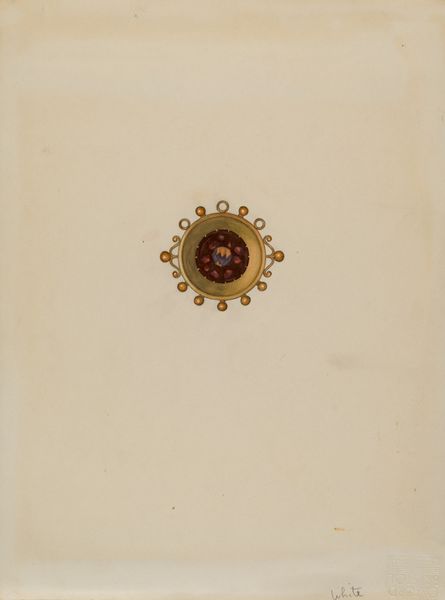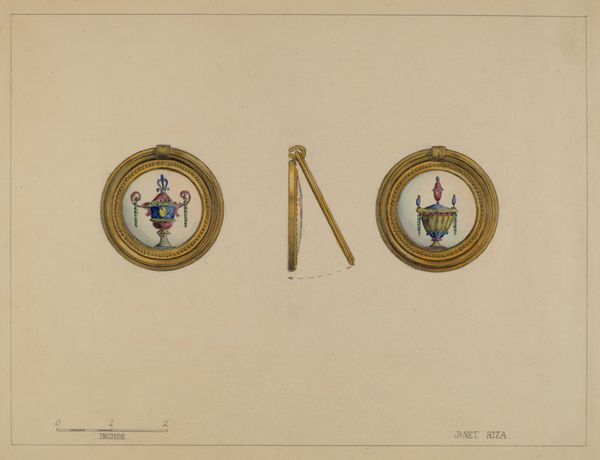
drawing
#
drawing
#
toned paper
#
water colours
#
pastel soft colours
#
white clean appearance
#
bubble style
#
ceramic
#
watercolour illustration
#
cartoon style
#
positive shape
#
watercolor
Dimensions: overall: 18.9 x 22.7 cm (7 7/16 x 8 15/16 in.)
Copyright: National Gallery of Art: CC0 1.0
Curator: We’re looking at Isidore Steinberg’s “Watch Fob,” a watercolor illustration dating between 1935 and 1942. Editor: My first impression is one of understated elegance. There’s something very clean and considered about this, despite it being a watercolor. The soft colours create a pleasing harmony. Curator: Steinberg was known for his keen eye in drafting product designs. Considering the timeframe, during the austerity measures leading up to World War II, how do you see that context influencing the design of something like a watch fob? Editor: Immediately, the circular form of the watch face, emphasized across the three sketched iterations, echoes ancient solar symbols and cycles of time, grounding the wearer in the present. This continuity offers an appealing psychological certainty. Curator: Good point. It's tempting to read it as a symbol of status, an association deeply ingrained in European history from royal timekeepers. Fobs were common even among middle class men. And yet the watercolor feels less like an aspiration to high status and more to the everyday. Editor: Precisely, because the colors feel so grounded and earthly. Though cartoonish in style, each color has a significant association: the strong primary reds point towards blood and strength; conversely, the darker turquoise towards depth, introspection. Each implies an aspect of its user. Curator: We have to consider how industrial design increasingly had its effect on even luxury items by this period, though. By demystifying and re-presenting it with precision, he potentially makes luxury accessible and understandable. Editor: Perhaps that democratization is visible here—the use of a cartoonish design to suggest universality while speaking to fundamental concepts around aspiration and hope. Curator: So it's not just about the democratization of design but about reflecting back the viewer’s aspiration, making luxury part of a more universal vision. Interesting. Editor: Exactly. A simple object can hold many layered cultural values if you only look closely. Curator: Thank you, it's important to remember that these objects offer connections across time. Editor: Indeed, connections to both ourselves and others.
Comments
No comments
Be the first to comment and join the conversation on the ultimate creative platform.
